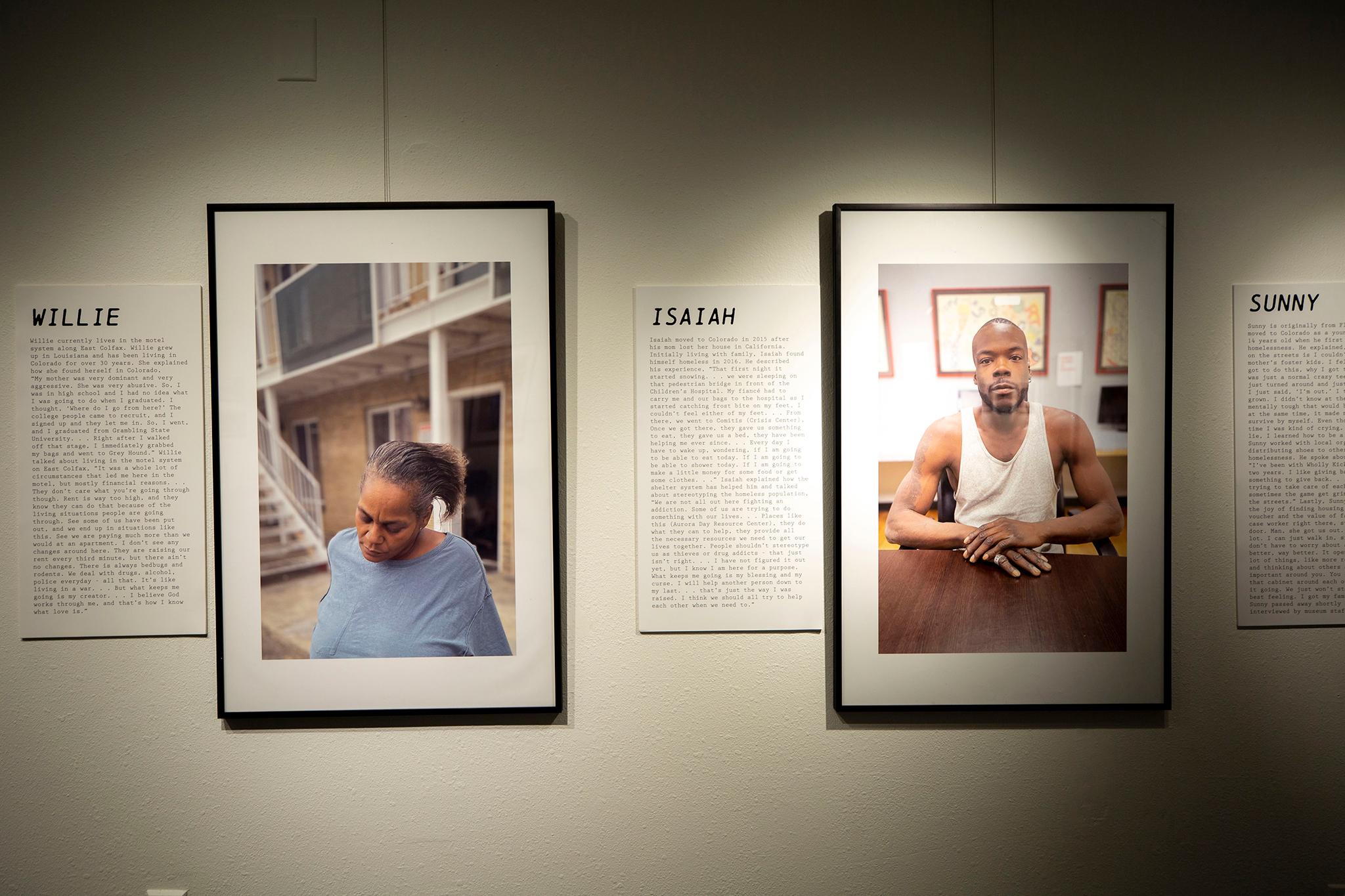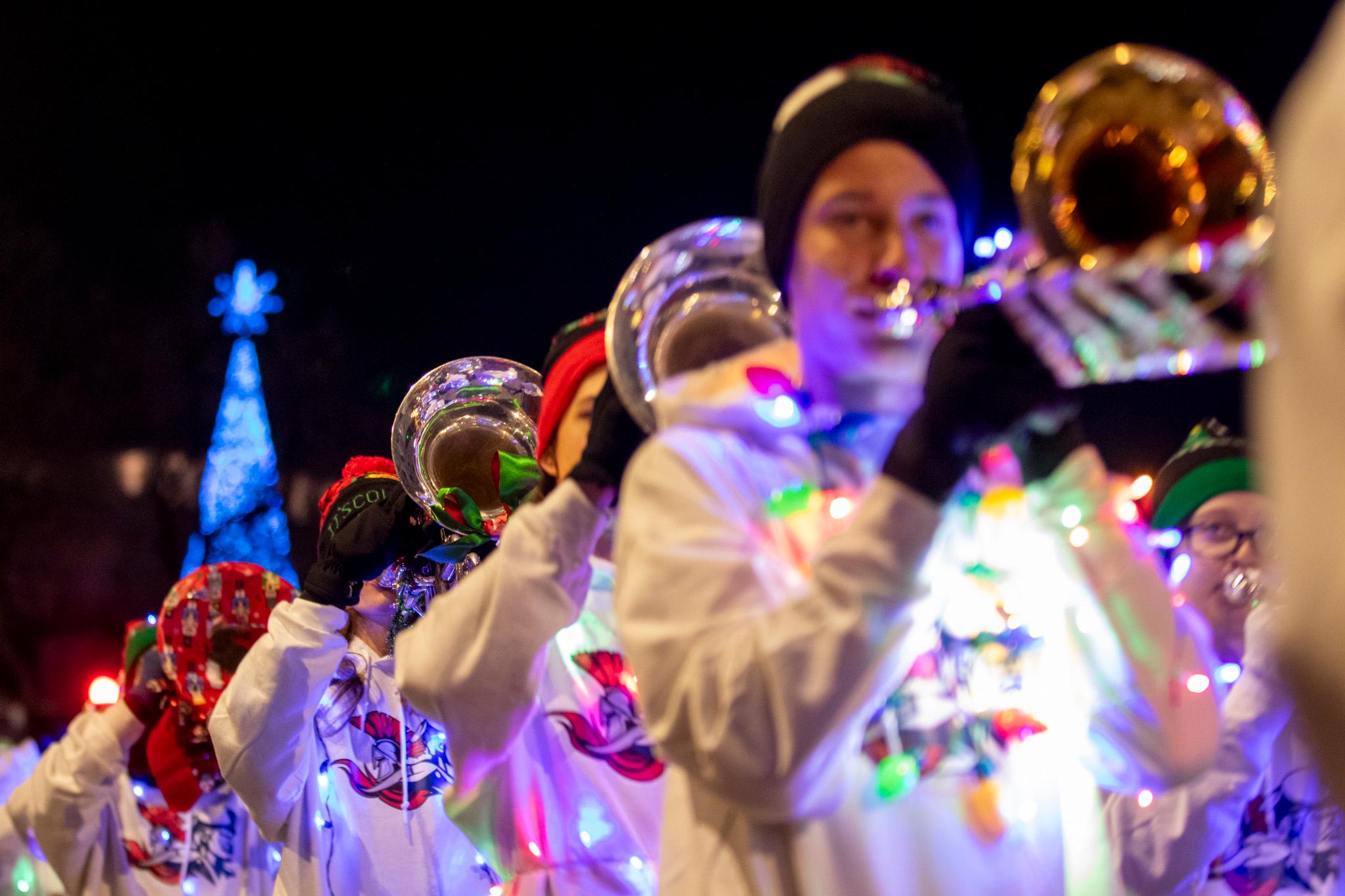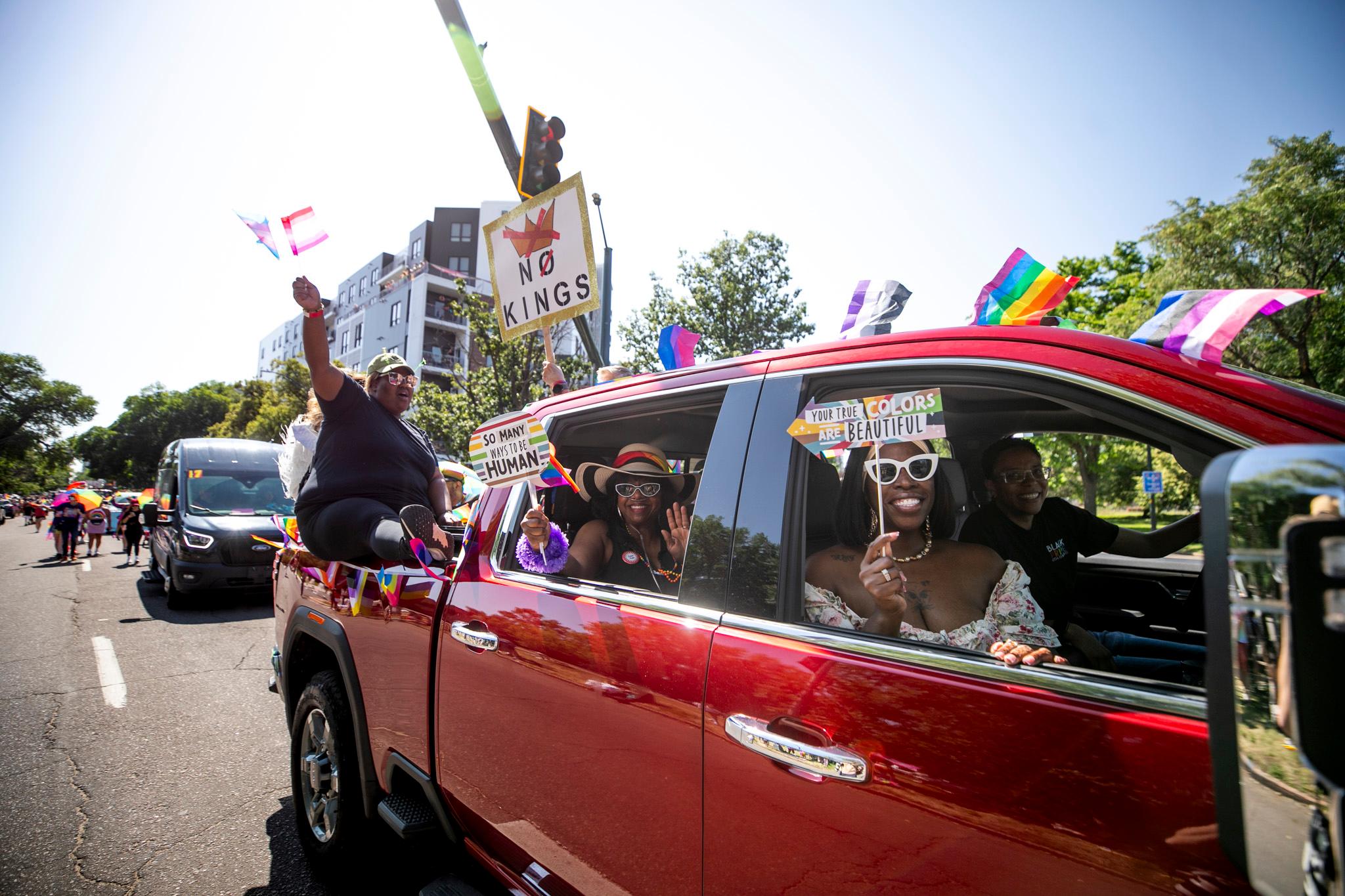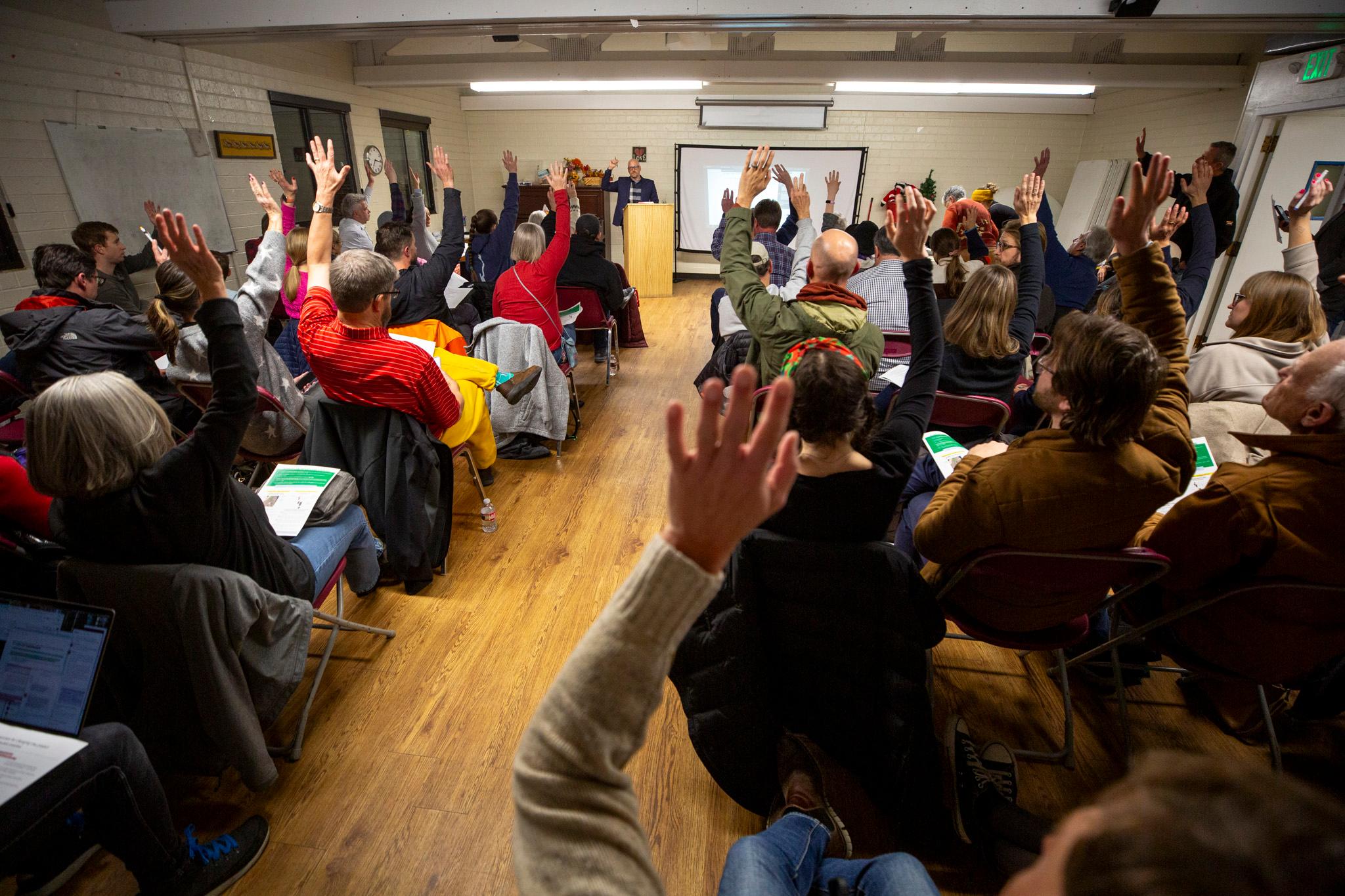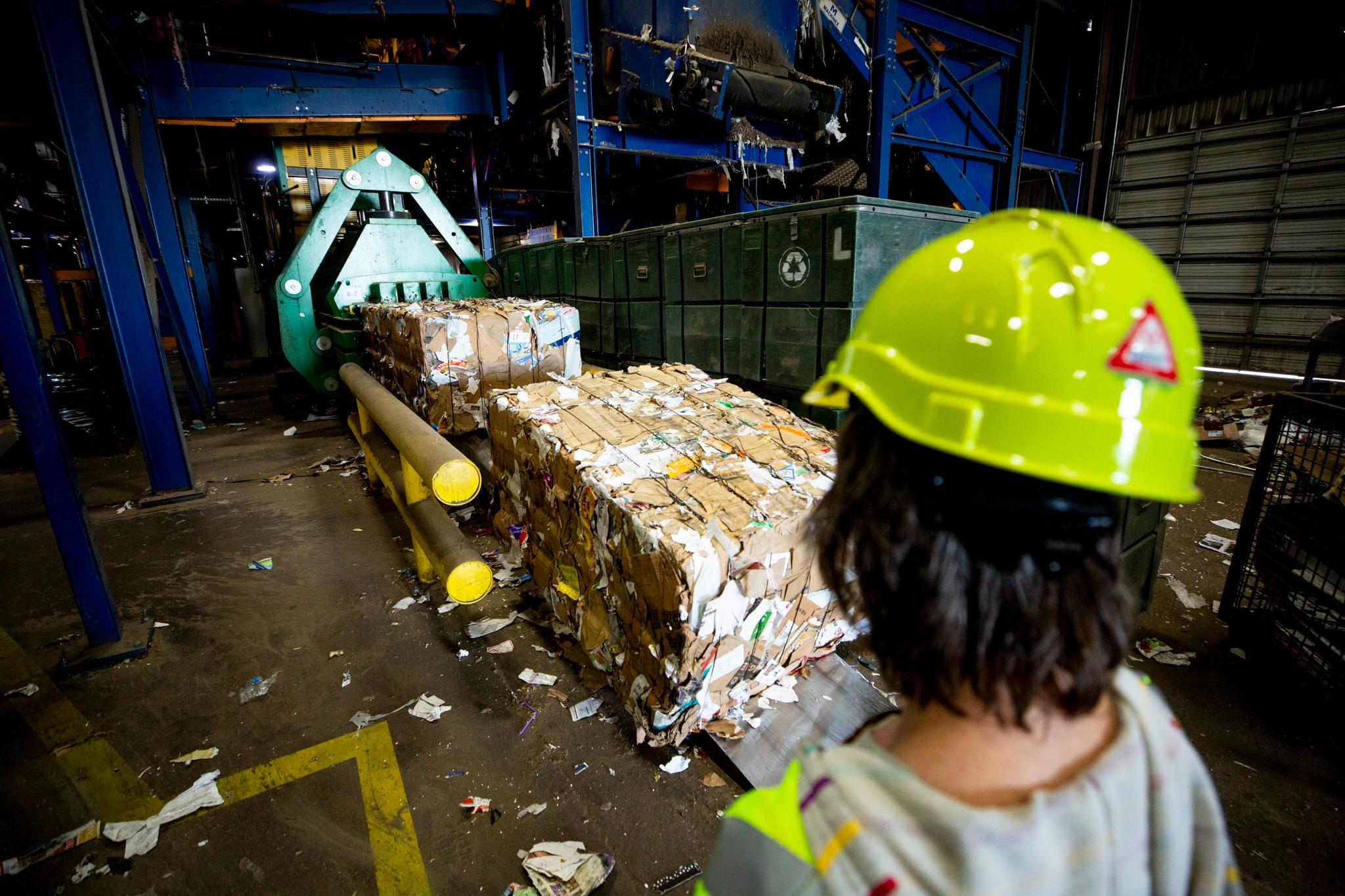Hanging in a quiet, whitewashed room in the Aurora History Museum is a series of 24 large-scale, color photographs of 24 individuals. Hanging next to each image is a long didactic, printed in courier font: an excerpt of an interview, in which that photographed person shared intimate details of their life, what it's like to face housing insecurity, and their thoughts on homelessness as a broader issue. And interspersed throughout the gallery, black and white photographs of Aurora's streets convey what it's like to live on them.
The series is part of the museum's "Without a Home in Aurora," an oral history of some of the people experiencing homelessness and housing insecurity in Aurora. The exhibit is meant to encourage visitors to take the time to get to know some of the people living in Aurora's streets and shelters, to engage with stories that often go untold, and to better understand the complexity of a topic the museum team says is often misunderstood.
Planning for the exhibit began about a year and a half ago.
"It really was just out of personal passion for the topic," said Christopher Shackelford, curator of exhibits at the Aurora History Museum.
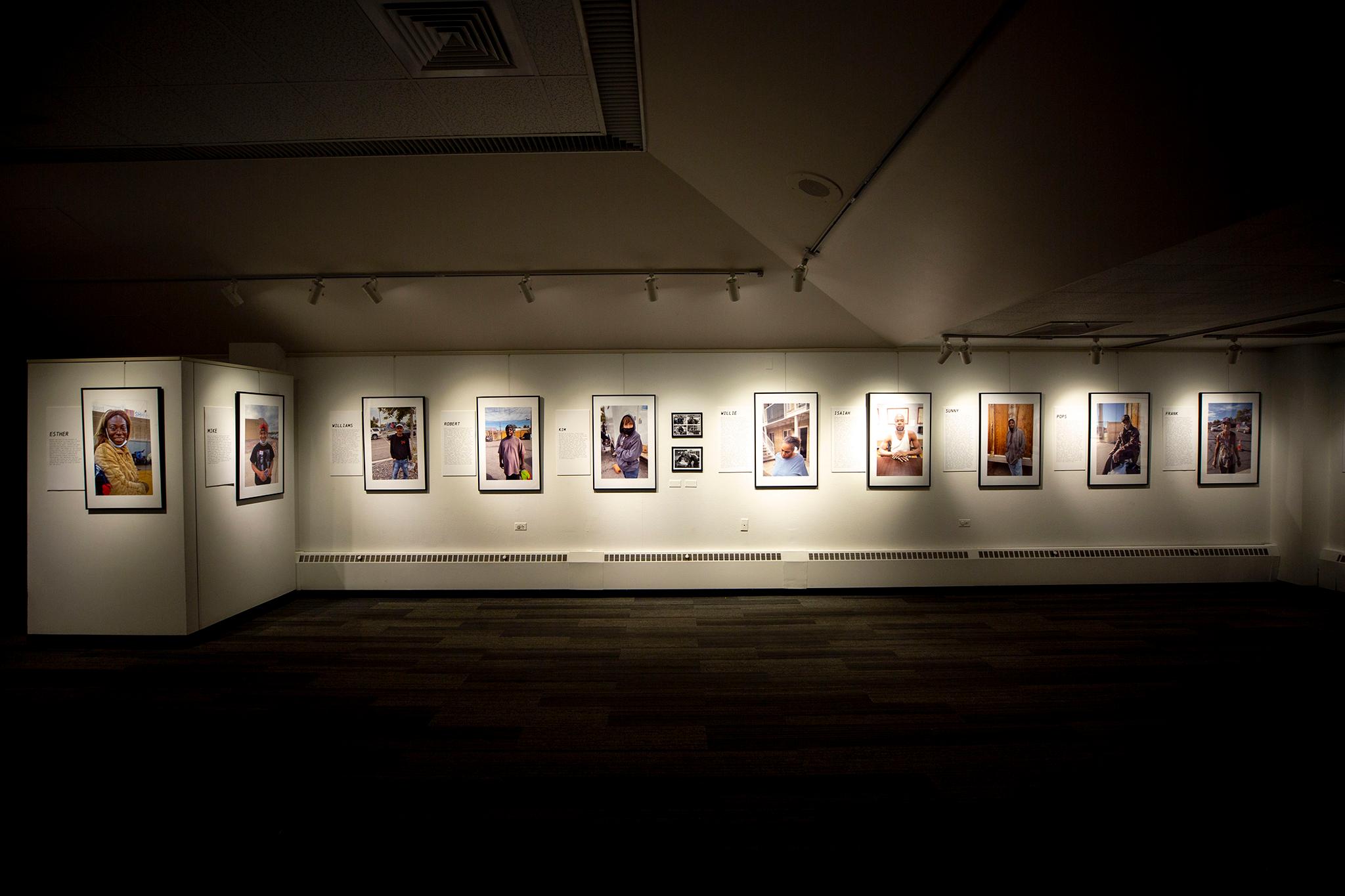
He said he'd watched a few documentaries about homelessness early in the pandemic to kill time. He said some of them really demonstrated the complexity of the issue of homelessness.
"I had an idea of what someone experiencing homelessness was like," he said. "I've known people in my life who have experienced homelessness. But I think the picture of homelessness in our community is very different than a lot of people imagine. For example, people who are doing rideshare, and yet still are sleeping in their car. People who are living in our motel systems, who are living day to day or week to week, lucky to have a roof over their head. Families that are double or tripling up families in a small apartment."
Shortly before lockdown, the museum had written up a new strategic plan, refining its mission to include a commitment to telling the stories of all Aurorians.
"I really saw this as a very important piece to add to that," Shackelford said. "These people are commonly overlooked, underheard. And I felt it was very important for us to get in touch with these folks, hear what their experiences are like in our city, and bring some humanity to a very complex and difficult topic."
According to data from the City of Aurora, there are 594 individuals experiencing homelessness in Aurora who stay in shelters.
That number doesn't take into account those who are not using shelters, or who are otherwise housing insecure, like those crashing at friend's house or sleeping in their car. The City of Aurora was unable to conduct its annual Point in Time report for 2021 due to COVID-19. However, in the last few years, Point in Time data demonstrated a steady rise in the number of people experiencing homelessness.
"It's become a larger issue as economic disparity and the cost of living in our city is extreme," Shackelford said.
Often, he said, people are just a degree of separation from becoming homeless.
"A lot of these people I talked to had once owned a home, or rented, or had some security in their housing," he said. "But one economic factor or another had driven them from their homes. Some of it's trauma, some of it's personal economic choices, others are economic pressures at large. And I feel that through many different factors, many people throughout our community are on the verge of being housing insecure, or we're all just one step away from it in a lot of ways."

The museum team worked with city partners, like the Department of Housing and Community Services, that were already working with people experiencing homelessness in Aurora.
These partnerships helped the team connect with people who might be interested in participating in the project. The museum team attended demonstrations and other events to meet people and begin building relationships. But the partnerships also meant that when the museum staff set out to interview people, they could connect them with resources.
"We don't just want to show these folks perhaps in the worst time of their lives," said museum director Scott Williams. "We also want to be able to provide some resources. And hopefully our museum visitors or visitors to the exhibit, they'll feel compelled, they'll feel that impact."
When the team connected with people, they explained what they were working on and asked if they'd like to be a part of it. While some declined to participate, Shackelford said many were interested when they learned the museum would preserve the interviews digitally in the museum's archives.
Shackelford said that when he interviewed people, he stuck to open-ended questions. For example: Tell me who you are. Where are you from? What brought you to Aurora? Have you experienced homelessness? What led you to experience homelessness? What are your fears or anxieties? What are your hopes for the future? What are your dreams? What keeps you going?
"We wanted to talk to individuals so that it's their story -- that it's coming from them," Williams said. "It's not going through a filter. It's exactly what they have to say, and through consent."
The team also connected with Amy Forestieri, the photographer who took the black and white photos displayed in the exhibit.
Forestieri has been taking photos on the street for about three years now. It's a personal subject for her. She says she once experienced homelessness herself: When she was in high school, she had to live in her car and in a friend's apartment for a time. Fortunately, she says, she was able to join the military and get out of that situation. Now, she spends a lot of time talking to people on the street, taking their photos.
"It was really amazing...just being there and connecting with people," Forestieri said. "Every time you go and you connect with our community, you get way more than you give."
Some of the people Forestieri talks to are initially reluctant to have their photo taken.
"A lot of people will say, 'You don't want to photograph me, I'm ugly.' And that kills me," she said. "When they say that, I'm like, I promise you're gonna like what I make. I'm not gonna stop until you like it. I'm gonna show you what you look like to me."
Many of them don't have any photos of themselves. When Forestieri takes a photo of someone experiencing homelessness, she prints the photos professionally in black and white and then works to find them, so she can return it to them. She'll approach a group of people on the street and ask them if they know the person in the photo.
"They flip through and they really like them, because they see themselves in the best light. There's no filtering. I don't do cosmetic surgery through Photoshop, nothing," she said. "In black and white, your wrinkles look beautiful. You look awesome. You look like a story."
There's another reason she chose black and white photography.
"I want them to take center stage, not their environment," Forestieri said.
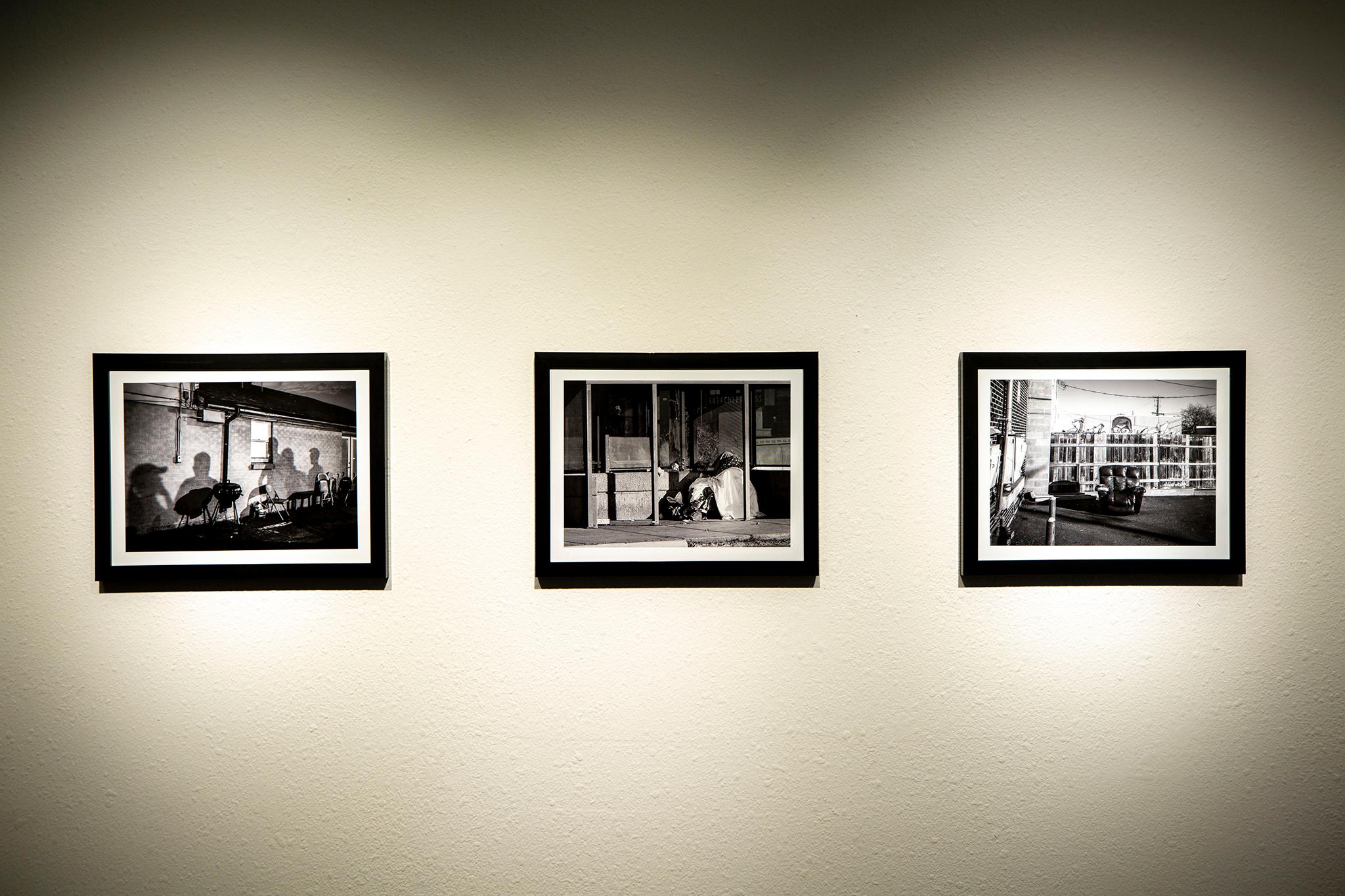
Williams said the project left him with a lot of impressions, and helped solidify thoughts he'd had before.
"What struck me was how real their conversations were, how direct they were. There's nothing that they're hiding behind, at least when we talked to them," Williams said. "It's something that, for me, was refreshing -- that they're going to tell you exactly what's going on. And in this world of smoke and mirrors, sometimes that really doesn't happen."
Williams was struck by how positive many of the people were about the future, how they were determined to not be defined by the situation they were in but by who they are and what they're capable of. It struck him how many barriers there are for people who find themselves housing insecure. For example, there was a story that emerged in their interviews about a woman who'd gotten a job and was making money, but couldn't complete an apartment application because it asked for a current address.
"One of Amy's photos she provided for the exhibit is a gentleman outside of a barber shop," Williams said. "And there he is with his cart, and without a mask on, and his entire property, everything he owns, he would have to leave unattended to go in and get a haircut."
Forestieri said she hopes people will visit the exhibit before judging it.
"Because it's not political," she said. "It's not blame, or shame. It's actually very inspiring and touching."
Shackelford said he hopes the exhibit will help visitors see people for people.
"I've done quite a few exhibits in my young career, and this one's gonna stick with me for a long time. I think that the emotional impact of it, it's transformative. It made me see my city in a new light. And I think that made me appreciate the entire spectrum of our population from a whole new perspective," Shackelford. "I really hope that the guests as they leave our gallery will be able to see these people for who they are, and see common humanity. "
The Aurora History Museum is open 9 a.m. to 4 p.m. Tuesdays through Fridays, and 11 a.m. to 4 p.m. Saturdays and Sundays. "Without a Home" runs through May 29, 2022. It is free to attend.

